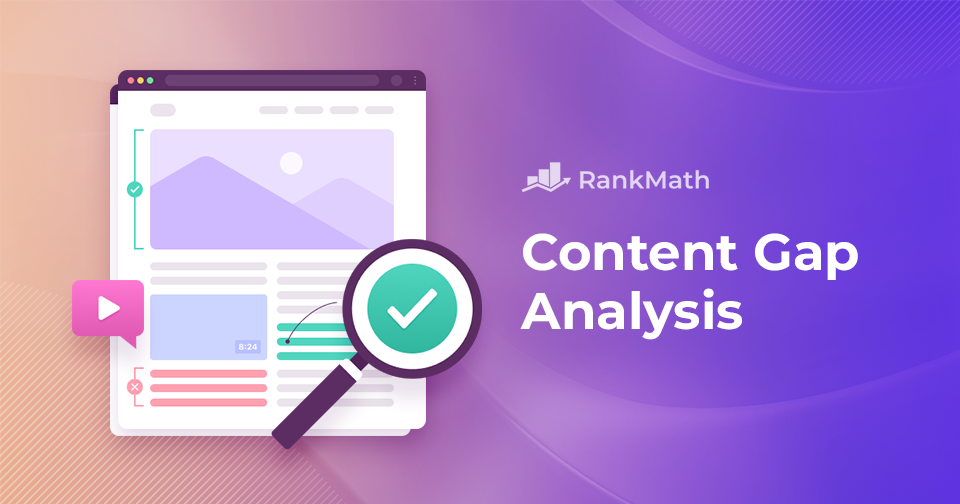Have you ever wondered why your content just isn’t hitting the mark or delivering the results you want?
You’re definitely not alone. Bridging the gap between creating content and actually engaging your audience can feel like an uphill battle.
But what if you can spot exactly where those gaps are, and turn them into opportunities to grow and improve?
That’s where content gap analysis comes in. It’s a smart way to identify what’s missing between what you’re offering now and what your audience actually wants or expects.
In this post, we’ll break down everything you need to know about how to do a content gap analysis, and how it can transform your content game. So let’s dive in!
Table Of Contents
1 What is Content Gap Analysis?
Content gap analysis is all about taking a close look at your existing content to see where you might be missing the mark, where there’s missing information, outdated material, or areas that don’t fully meet your audience’s needs and interests.
It’s not just about your own content, either. By also analyzing what your competitors are publishing, you can spot missing topics, untapped keywords, and fresh opportunities to create or improve content. This helps you better serve your audience and boost your SEO performance.
Why Do a Content Gap Analysis?
Conducting a content gap analysis offers several significant benefits that can transform your content strategy.
- Discover new content opportunities: By carefully reviewing your current content and comparing it to what your audience is searching for, you’ll discover topics and questions you haven’t covered yet, giving you a roadmap for creating valuable new content.
- Improve and refresh existing content: You’ll likely find articles or pages that are outdated, shallow, or missing critical details. Updating them with fresh data, deeper insights, or engaging elements like videos and infographics can dramatically boost their relevance and performance.
- Strengthen SEO and boost rankings: Content gap analysis helps you identify important keywords that your audience is searching for but you haven’t targeted yet. Creating or optimizing content around these terms can improve your visibility in search results.
- Meet your audience’s needs more effectively: Perhaps the biggest advantage is ensuring your content truly aligns with what your audience cares about. When you address their questions and challenges directly, you build trust, keep them engaged, and establish your brand as a credible authority in your field.
2 Types of Content Gaps
If you want to build a truly effective content strategy, it’s important to understand the different types of content gaps you might face.
2.1 Topic Gaps
Topic gaps happen when you’re not covering subjects your audience cares about.
For instance, if you run a technology blog but haven’t touched on emerging trends like AI, you’re missing out on a topic your readers are likely interested in.
To fix this, research what your audience is searching for and review your competitors’ content to spot subjects you haven’t covered yet. You can use research tools like Google Trends, Reddit, or forums to identify trends.

2.2 Keyword Gaps
Keyword gaps occur when you’re not targeting keywords that your audience is actively searching for. This can mean missing out on valuable organic traffic and lower search rankings.
Use tools like Ahrefs or Semrush to identify these gaps, then update or create content to include those keywords. This way, you can boost your visibility and SEO performance.

Refer to our dedicated tutorial on keyword gaps to identify keyword gaps for your content.
2.3 Format Gaps
Not everyone likes to consume content the same way. Some prefer blog posts, while others love videos, podcasts, infographics, or interactive tools.
Format gaps appear when your content isn’t available in the formats your audience prefers. For instance, if your audience enjoys video tutorials but you only publish written guides, adding videos can help keep them engaged.
2.4 Quality Gaps
Quality gaps arise when your content doesn’t meet your audience’s expectations. This can mean outdated facts, shallow analysis, poor writing, or weak visuals.
To close quality gaps, regularly update your content to keep it accurate and detailed. Adding visuals, fresh insights, and polishing the writing can make your content more valuable and engaging.
2.5 Funnel Gaps
Funnel gaps occur when you lack content for specific stages of the buyer’s journey: awareness, consideration, and decision.
For example, you might have lots of top-of-funnel content to attract visitors, but little to help them choose your product or service. To fix this, create targeted content for every stage so you can guide visitors through the journey from awareness to purchase.
Refer to our dedicated tutorial on the buyer’s journey and create content at each stage of the buyer’s journey.
3 How to Perform Content Gap Analysis
One practical way to perform a content gap analysis is by using Google Search Console.
In Google Search Console, head over to the Performance section from the left-hand menu. Here, you’ll see key metrics like total clicks, impressions, average click-through rate (CTR), and average position, all of which tell you how your content is performing on Google Search.
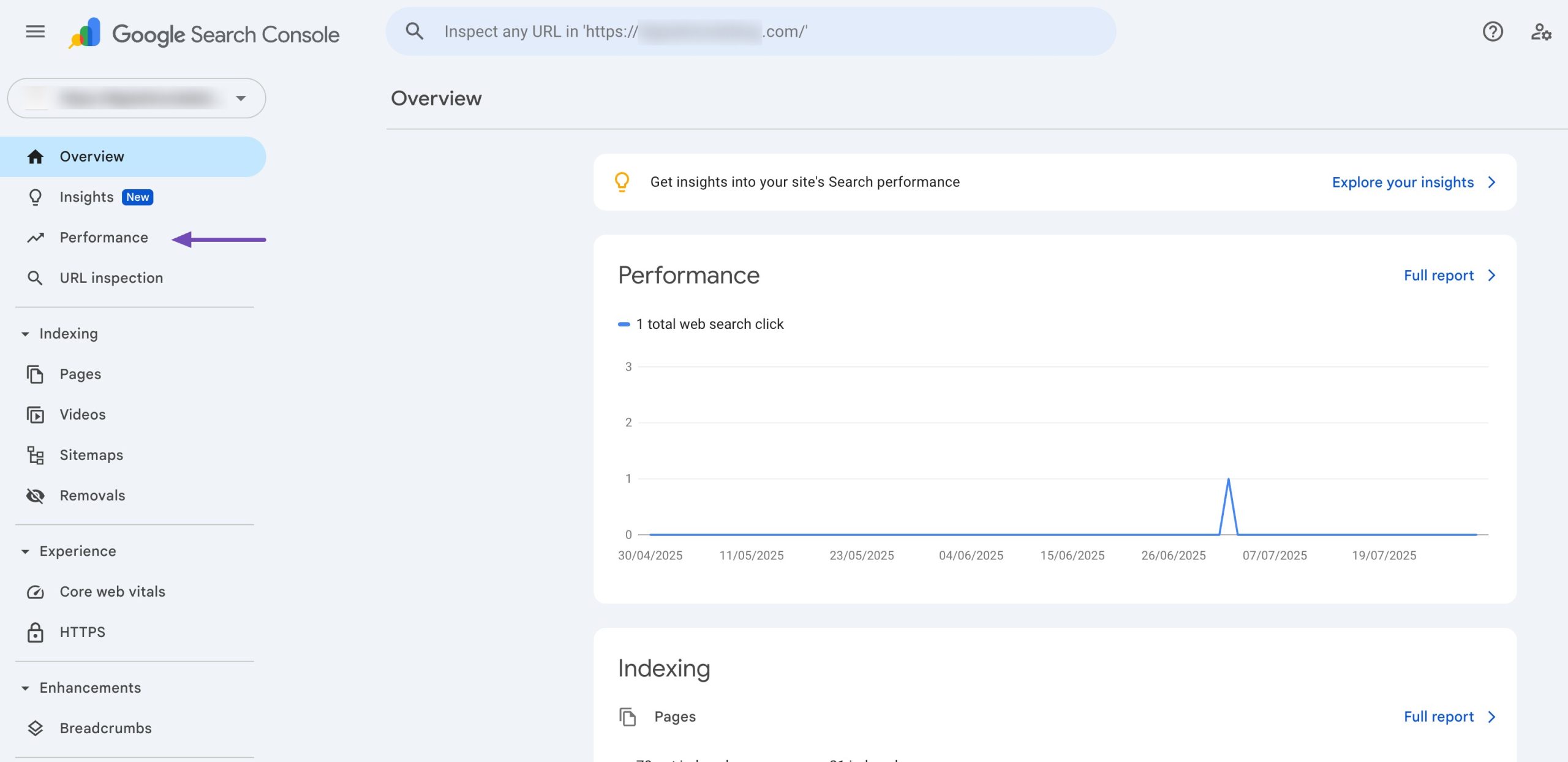
In the list of search queries your audience is using to find your site, look for queries with high impressions but low clicks. This usually means your pages are showing up in search results, but people aren’t clicking on them.
This can point to a few potential gaps: maybe your titles or meta descriptions aren’t compelling enough, or your content isn’t quite matching what users are really looking for (user intent).

Switch to the PAGES tab to see which pages are getting the most clicks and impressions. Compare these with the list of queries. If there are high-impression queries that aren’t driving traffic to any of your pages, you’ve likely found a content gap.
These gaps might relate to secondary search intent, search terms that your content partially covers but not in depth. Recognizing these can help you create or update content to better match what your audience actually wants.

Go back to the QUERIES tab and add a Page filter.
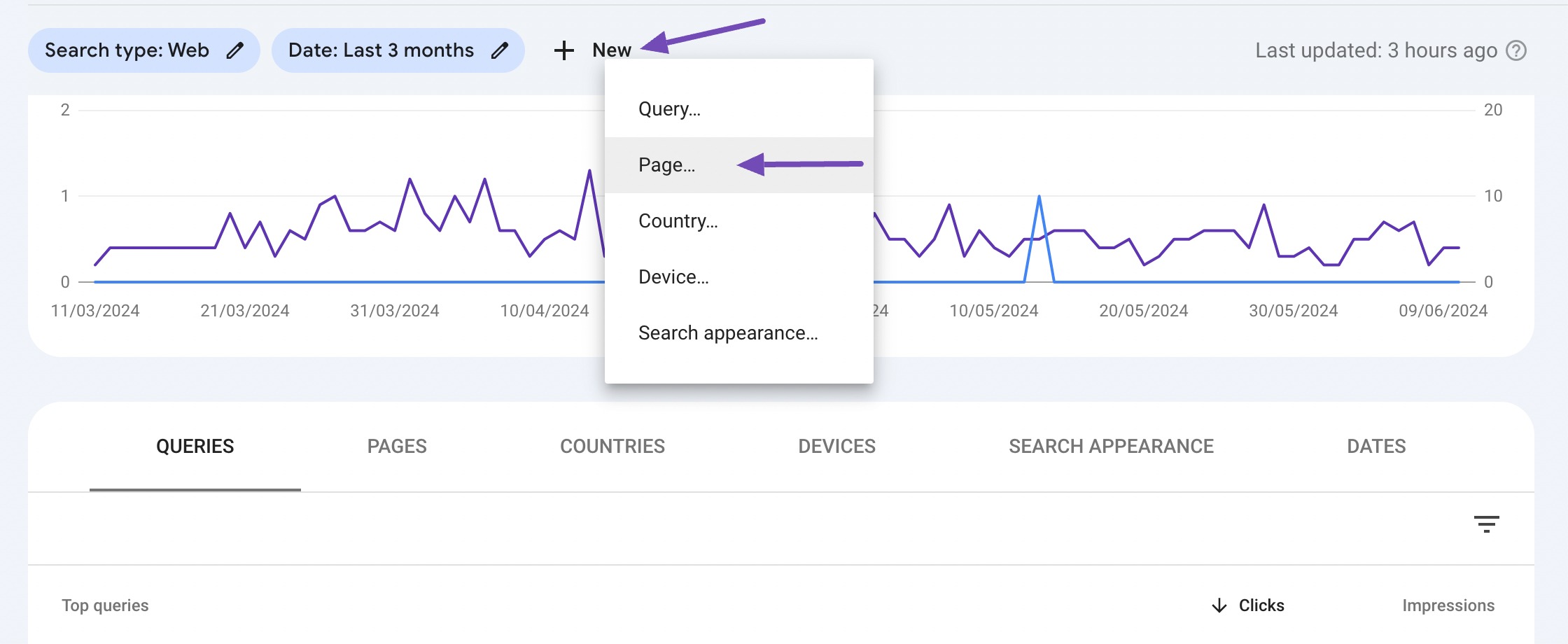
Choose either URLs containing or Exact URL, and enter the specific page you’re analyzing.
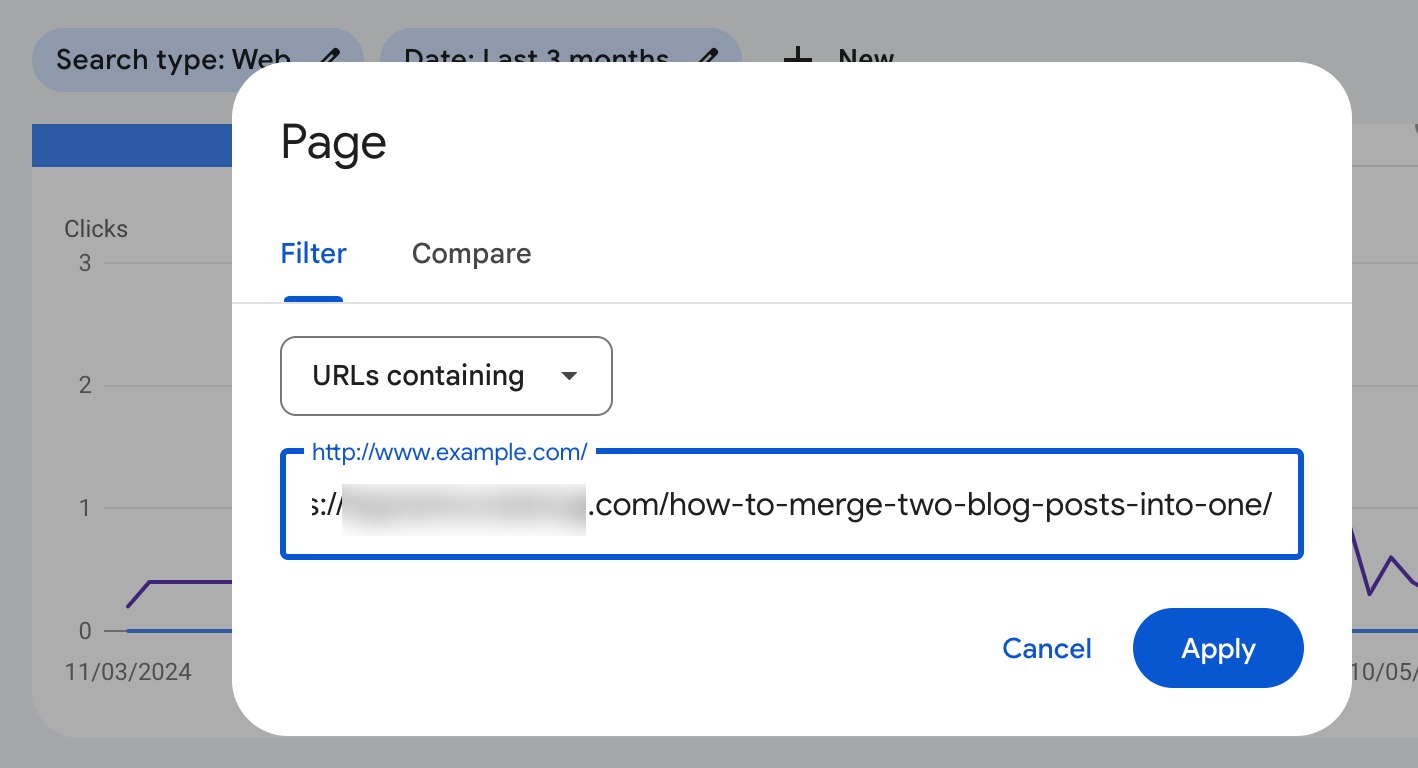
This will show you all the keywords that the page is currently ranking for, even if they aren’t driving many clicks. By seeing which keywords generate impressions, you can identify areas where your content could be expanded or improved.
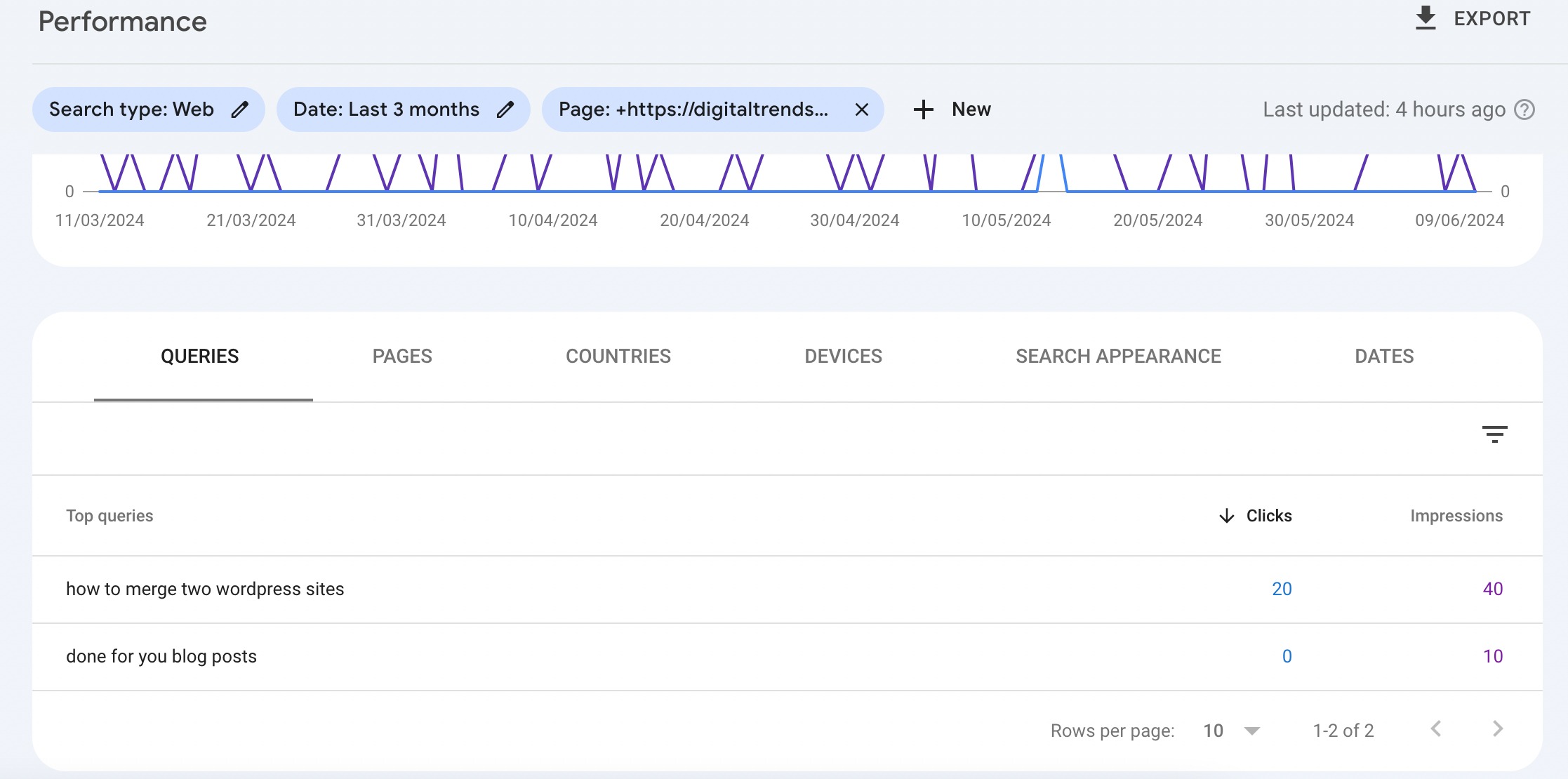
To take your analysis further, use tools like Ahrefs or Semrush to see what your competitors are doing.
With tools like Rank Math PRO, you can even do a side-by-side comparison of your site’s performance against competitors. Look closely at their content’s format, depth, and quality to see what they’re covering that you might be missing.
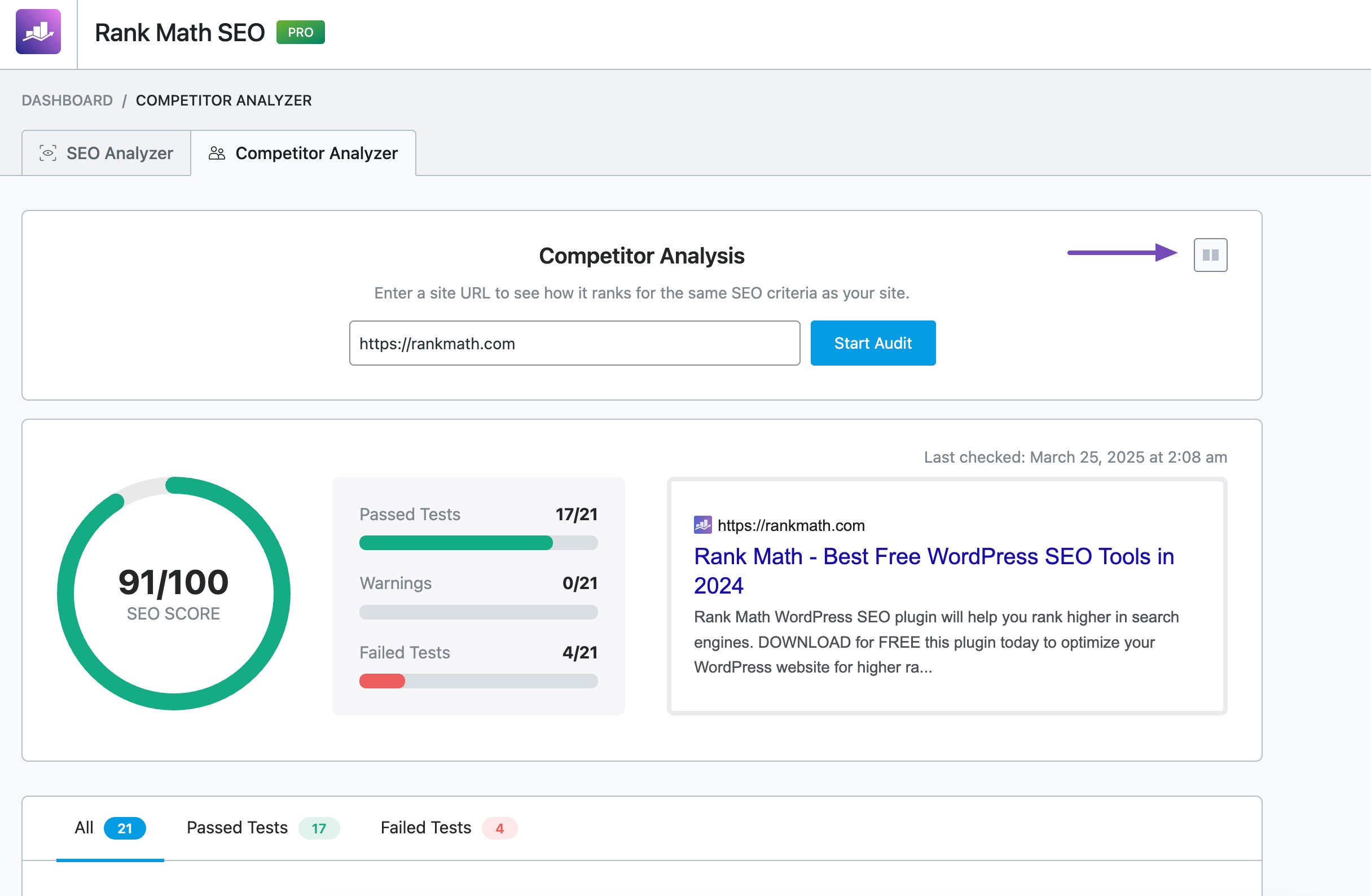
Use these insights to create new content to fill the gaps you’ve identified, or to improve your existing content so it better aligns with what users are searching for.
Finally, regularly check your Google Search Console data to track how your updated content is performing. Continuous analysis helps you spot new gaps as they appear and keep refining your strategy over time.
4 Create and Optimize Content
Once you’ve identified gaps through your content gap analysis, the next step is to create new content or optimize existing content to fill those gaps and better serve your audience.
Let’s break down what that looks like and see how you can apply it.
4.1 Create More Engaging Headlines
Your headlines are often the first (and sometimes only) thing users see in search results or on social media. A strong, clear, and keyword-rich headline can make the difference between someone clicking your link or scrolling past it.
For instance:
- Instead of a generic headline like Content Marketing Tips, you can write 10 Actionable Content Marketing Tips to Boost Engagement in 2025.
- This headline is more specific, includes a benefit (boost engagement), and even a timely element (2025).

4.2 Create High-Quality, Valuable Content
Don’t just write to fill space. Your content should answer real questions your audience has, solve their problems, or help them achieve something.
For instance:
- If you notice your competitors have detailed guides on how to do keyword research, but yours is a short blog post, consider expanding it into a comprehensive, step-by-step guide.
- Include visuals, examples, and real data to make it more useful and engaging.
And here’s something worth noting: AI is helping 47% of users produce content faster, and 35% are shifting their focus from quantity to quality.

You can use our Content AI to help structure your content and keep it focused on what your audience cares about.
4.3 Use Keywords Naturally
A big part of content gap analysis is spotting keyword gaps, important keywords your content doesn’t target. When adding these keywords, do it in a way that feels natural.
For instance, instead of forcing the best SEO tools into every paragraph, you can include it in a subheading like Best SEO Tools to Start With and discuss them in detail there.
This way, your content stays readable and helpful while also becoming more relevant to search engines.

4.4 Improve Existing Content
Sometimes, your gap isn’t about missing topics, but about content that’s outdated or too thin.
For instance:
- You might have an article from 2020 on Instagram marketing tips.
- Update it with the latest algorithm changes, add new features like Reels, and include fresh statistics from 2025.
Enhancing old content can often bring better results faster than starting from scratch.
4.5 Optimize for SEO
Content optimization also means improving on-page SEO:
- Writing clear, concise meta descriptions that encourage clicks.
- Adding alt text to images so they’re accessible and searchable.
- Linking related posts internally so visitors can easily explore more on your site.
Technical SEO is just as important: Make sure your site loads quickly, looks good on mobile devices, and uses HTTPS for security.
5 Frequently Asked Questions
How do I start a content gap analysis?
Begin by reviewing your existing content, analyzing your audience’s search behavior using tools like Google Search Console, and comparing your content with competitors. Identify areas where your content is lacking in depth, or relevance.
How often should I conduct a content gap analysis?
It’s recommended to conduct a content gap analysis at least twice a year. However, more frequent analyses may be beneficial in rapidly changing industries and competitive markets.
How can content gap analysis improve SEO?
By identifying and filling content gaps, you can target more relevant keywords, improve content quality, and enhance user engagement. This leads to better search engine rankings and increased organic traffic.
How do I prioritize content opportunities?
Prioritize content opportunities based on their potential impact and the effort required. Focus on high-impact, low-effort tasks first to quickly improve your content strategy and achieve significant results.
How do I measure the success of my content gap analysis?
Measure success by tracking key performance indicators (KPIs) such as organic traffic, search rankings, engagement metrics (e.g., time on page, bounce rate), and conversion rates before and after implementing changes.
6 Conclusion
At its core, content gap analysis isn’t just about fixing what’s missing; it’s about better understanding your audience and making your content truly work for them. By identifying missing topics, untapped keywords, and areas where your content can be clearer, deeper, or more engaging, you can turn gaps into opportunities for growth.
When you make content gap analysis part of your regular strategy, you’re not just keeping up with competitors; you’re creating content that’s more relevant, valuable, and aligned with what your audience actually wants.
That’s the real value of content gap analysis, and why I believe it’s worth doing again and again.
If you like this post, let us know by Tweeting @rankmathseo.
